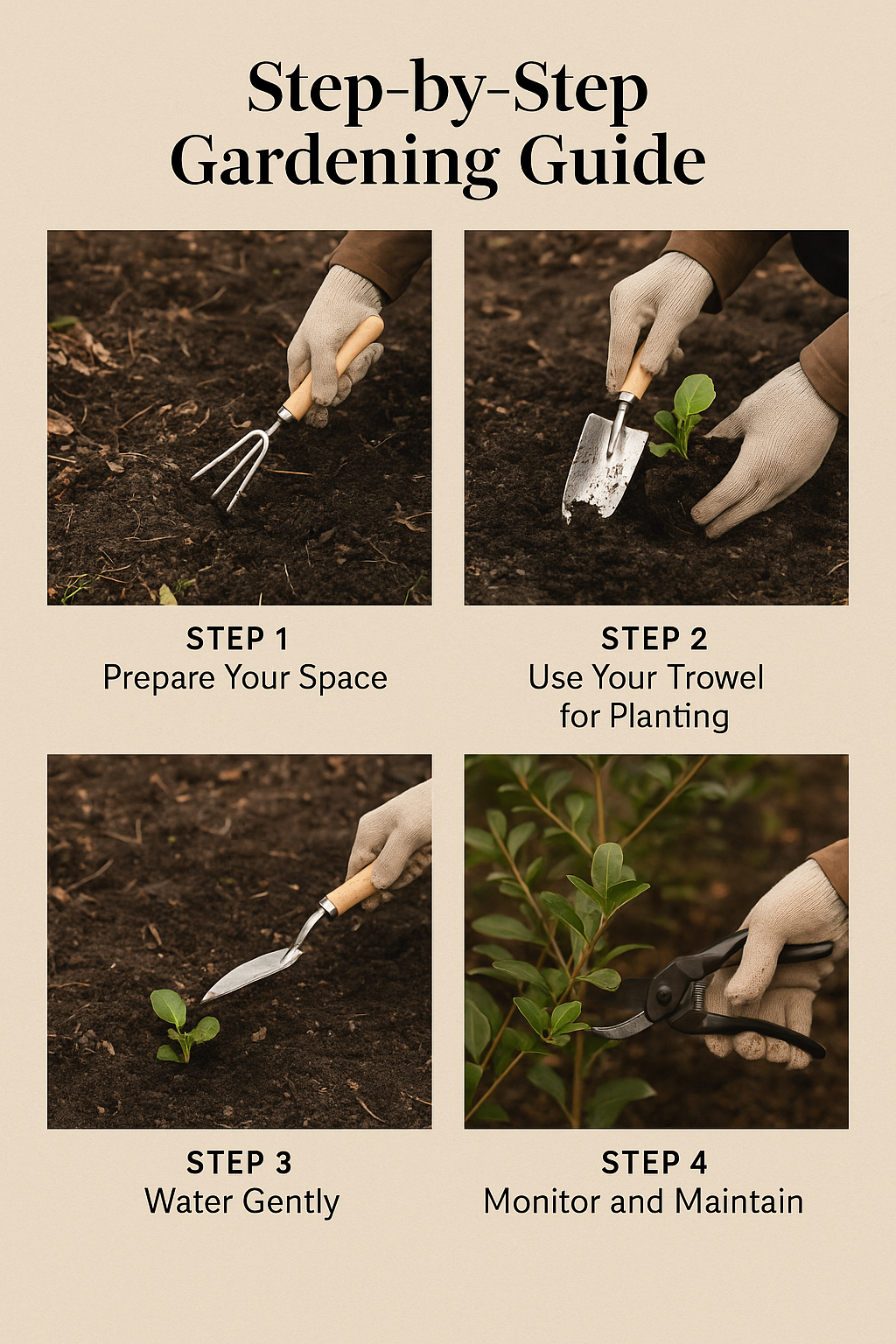Starting a garden can be one of the most rewarding hobbies, but without the right tools, even the simplest tasks can become frustrating. Gardening tools every beginner should own are essential not only for convenience but also to ensure healthy plant growth and long-term gardening success. This guide covers the most important tools for novice gardeners, explaining what each tool does, how to use it properly, and why it matters.
Why the Right Tools Matter
Having the correct gardening tools helps you work more efficiently and comfortably. It reduces the risk of injury, protects your plants, and ensures better results. For beginners, a small set of well-chosen tools is more valuable than a garage full of gadgets.
Benefits of Owning Proper Tools:
- Improved accuracy in planting and pruning
- Less physical strain during garden tasks
- Healthier plants due to precise care
- Time savings with the right equipment
Essential Gardening Tools for Beginners
Here’s a practical breakdown of tools that are perfect for any gardening starter kit:
1. Hand Trowel
- Purpose: Digging small holes, transplanting seedlings, removing weeds
- Tip: Choose a stainless steel blade for durability and easy cleaning
2. Pruning Shears (Secateurs)
- Purpose: Cutting stems, shaping plants, removing dead leaves
- Tip: Opt for a bypass blade for cleaner cuts on live plants
3. Watering Can or Hose with Spray Nozzle
- Purpose: Hydrating your plants without disturbing the soil
- Tip: Use a can with a detachable rose head for gentle watering
4. Garden Gloves
- Purpose: Protecting your hands from cuts, blisters, and thorns
- Tip: Look for breathable fabric with reinforced fingertips
5. Hand Rake or Cultivator
- Purpose: Loosening soil, removing debris, mixing fertilizer
- Tip: A short handle gives better control for small garden beds
6. Garden Fork
- Purpose: Aerating soil, turning compost, breaking up clumps
- Tip: Great for preparing soil in raised beds or compacted areas
7. Spade (Short-Handled Shovel)
- Purpose: Digging, edging, moving soil or compost
- Tip: Look for a steel blade and ergonomic handle
8. Wheelbarrow or Garden Cart
- Purpose: Transporting soil, compost, tools, and plants
- Tip: For small gardens, a lightweight foldable cart is ideal
9. Soil Tester or Moisture Meter
- Purpose: Measuring pH, nutrient levels, or moisture
- Tip: A digital moisture meter helps prevent overwatering
Bonus Tools That Can Make Gardening Easier
While not absolutely necessary, these extras can significantly improve your gardening experience:
- Kneeling Pad – Prevents knee pain while working close to the ground
- Plant Labels – Helps identify seedlings and track growth
- Garden Apron – Keeps your clothes clean and your tools within reach
- Spray Bottle – Great for misting humidity-loving plants or applying diluted solutions
Step-by-Step: How to Start Using Your Gardening Tools
Step 1: Prepare Your Space
Clear debris from your gardening area and loosen compact soil using a garden fork or hand rake.
Step 2: Use Your Trowel for Planting
Dig small holes for seedlings or seeds using the hand trowel, ensuring correct depth and spacing.
Step 3: Water Gently
Use a watering can with a gentle nozzle to moisten the soil right after planting.
Step 4: Monitor and Maintain
Regularly check soil moisture with a tester and use pruning shears to remove dead growth weekly.

Common Mistakes to Avoid
- Using the wrong tool: Don’t use a spade for precise transplanting—use a trowel instead.
- Neglecting maintenance: Clean your tools after every use to prevent rust and plant disease.
- Skipping safety: Always wear gloves and closed shoes to avoid injuries.
Where to Buy Beginner Gardening Tools
🔗 Looking for a complete beginner gardening set? Check out this affordable starter kit on Amazon.
🔗 Want to learn how to grow your own plants from seed? Read our full guide: How to Start Seeds Indoors Like a Pro.
Want to know what those symbols and codes on seed packets mean? Read our simple guide to understanding plant labels.
Conclusion: Start Simple, Grow Smarter
You don’t need a full arsenal to begin gardening. With just a few gardening tools every beginner should own, you’ll have everything you need to dig, plant, prune, and grow confidently. Choose quality tools over quantity and invest in gear that fits your gardening space and personal comfort.
Take the first step today: Pick up a basic tool set and get your hands in the soil. Every plant you grow is a step closer to a more peaceful and fulfilling routine.
FAQ – Frequently Asked Questions
Can I garden without any tools?
Technically yes, but using tools makes gardening safer, faster, and more effective—especially for beginners.
How do I clean and store my tools?
Rinse off soil after use, dry thoroughly, and store in a dry, covered space. Oil metal parts occasionally to prevent rust.
Should I buy tools individually or as a kit?
If you’re just starting out, a beginner tool kit offers better value and covers all basic needs.
To get started with confidence, consider this complete beginner gardening tool set on Amazon, which includes gloves, a trowel, pruners, and more.
